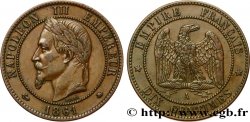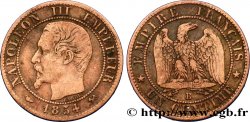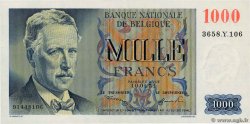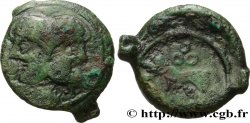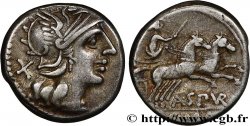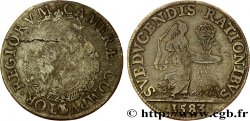E-auction 518-433346 - fme_528788 - SECOND EMPIRE Médaille du Palais du Commerce
Чтобы принять участие в торгах, вы должны войти в систему и стать подтвержденным участником аукциона. Войдите, чтобы сделать ставку. Ваш аккаунт будет подтвержден в течение 48 часов. Не ждите до закрытия торгов, чтобы зарегистрироваться.Сделав ставку на данный товар, вы вступаете в юридическое соглашение на покупку выбранного товара и нажатием кнопки «Сделать ставку» подтверждаете принятие вами условий интернет-аукционов cgb.fr.
Ставка может бить сделана только в полном эквиваленте евро. Торги закроются согласно времени, указанному в описании товара, все ставки, сделанные после закрытия торгов, учитываться не будут. Не следует откладывать предложение вашей ставки до последнего момента, так как система может не успеть обработать вашу заявку, и ваша ставка не будет принята. Более детальную информацию вы найдёте здесь: FAQ по интернет-аукционам.
БЕСПЛАТНО.
БЕСПЛАТНО.
| Оценить : | 180 € |
| Цена : | 37 € |
| Максимальная предлагаемая цена : | 115 € |
| Конец торгов : | 20 March 2023 20:30:30 |
| Участников : | 10 Участников |
Тип Médaille du Palais du Commerce
Дата: 1856
Монетный двор / Город: 69 - Lyon
Металл: copper
Диаметр: 68 mm
Ориентация осей монеты: 12 h.
Гравер PENIN Marius (1807-1883)
Вес: 150,8 g.
Век: lisse + main CUIVRE
Пуансон: main indicatrice (1845-1860) et CUIVRE
Комментарии о состоянии
Imposante médaille présentant des traces de manipulation. Aspect légèrement nettoyé au revers. Marques d’usure sur les points hauts
Лицевая сторона
Аверс: легенда: NAPOLÉON III EMPEREUR DES FRANÇAIS.
Аверс: описание: Tête nue de Napoléon III à gauche, signé : M. PENIN F. LVGD..
Обратная сторона
Реверс: легенда: PALAIS DU COMMERCE À LYON // LE MAL CTE DE CASTELLANE COMMANDANT L’ARMÉE DE LYON / A. DEVIENNE PRESIDANT LE CONSEIL MUNICIPAL / I. BROSSET PRÉDISANT LA CHAMBRE DE COMMERCE / LE SENATEUR C. M. VAISSE / CHARGE DE L’ADM.ON DU DEP.T DU RHÔNE / A POSÉ LA I.RE PIERRE DE CE MONUMENT / XXV MARS MDCCCLVI. / R. DARDEL ARCHIT..
Реверс: Описание: Vue du monument ; légende en huit lignes à l’exergue.
Комментарий
En 1853 est décidée la construction du palais du Commerce. Il doit réunir un musée d'art et d'industrie, des magasins, la compagnie des agents de change et des courtiers en soie ainsi que la chambre de commerce et le tribunal de commerce. Le 4 août 1854, René Dardel –architecte du pont la Feuillée, des halles couvertes de la rue de la Martinière et du percement de la rue Victor-Hugo– est choisi par le préfet Claude-Marius Vaïsse pour la construction de l'édifice, contemporain des percées du Second Empire.
La construction démarre en 1856 et la première pierre est posée le 15 mars. Le bâtiment est inauguré par Napoléon III et l'impératrice Eugénie le 25 août 1860.
Marius Pons Jean-Baptiste Penin, né le 15 août 1807 et mort en 1883, est un graveur-médailleur français, issu d'une famille provençale, d’origine flamande. Il est la première génération de graveurs dans la famille Penin. Il est le père du graveur-médailleur Ludovic Penin (1830 - 1868) lyonnais ;
- Marius Penin (1807-1880), graveur en médailles lyonnais.
- Ludovic Penin (1830-1868), fils de Marius Penin, graveur en médailles lyonnais, a le titre de graveur pontifical accordé en 1864 par Pie IX.
- Adolphe Penin (1888-1985), petit-fils de Ludovic Penin, graveur en médailles lyonnais, élève d’Henri-Auguste-Jules Patey à l’École nationale supérieure des beaux-arts de Paris.
- Paul Penin (né en 1921), fils de Adolphe Penin, graveur en médailles lyonnais, élève d’Henry Dropsy à l'École nationale supérieure des beaux-arts de Paris..
La construction démarre en 1856 et la première pierre est posée le 15 mars. Le bâtiment est inauguré par Napoléon III et l'impératrice Eugénie le 25 août 1860.
Marius Pons Jean-Baptiste Penin, né le 15 août 1807 et mort en 1883, est un graveur-médailleur français, issu d'une famille provençale, d’origine flamande. Il est la première génération de graveurs dans la famille Penin. Il est le père du graveur-médailleur Ludovic Penin (1830 - 1868) lyonnais ;
- Marius Penin (1807-1880), graveur en médailles lyonnais.
- Ludovic Penin (1830-1868), fils de Marius Penin, graveur en médailles lyonnais, a le titre de graveur pontifical accordé en 1864 par Pie IX.
- Adolphe Penin (1888-1985), petit-fils de Ludovic Penin, graveur en médailles lyonnais, élève d’Henri-Auguste-Jules Patey à l’École nationale supérieure des beaux-arts de Paris.
- Paul Penin (né en 1921), fils de Adolphe Penin, graveur en médailles lyonnais, élève d’Henry Dropsy à l'École nationale supérieure des beaux-arts de Paris..








 Cообщить об ошибке
Cообщить об ошибке Распечатать страницу
Распечатать страницу Отправить мой выбор
Отправить мой выбор Задать вопрос
Задать вопрос Consign / sell
Consign / sell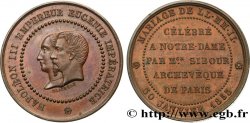
 Информация
Информация

